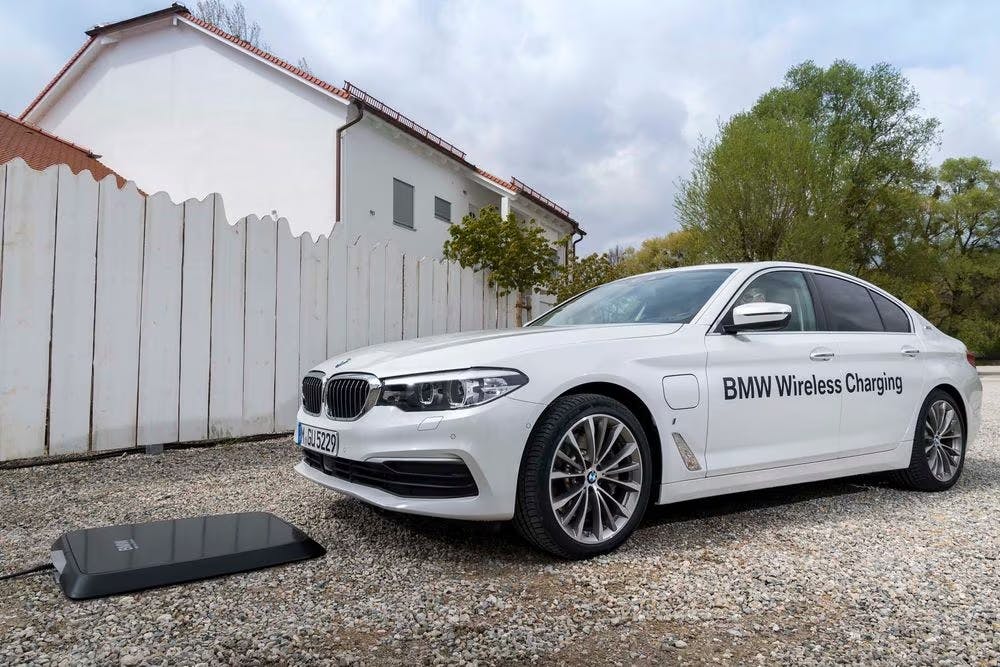
ORNL Unveils Next-Gen Wireless EV Charger
Imagine a world where you can simply park your electric vehicle (EV) and have it charge without the hassle of plugging in. This dream may soon become a reality thanks to advancements in wireless charging technology. While wireless EV charging has been around for some time, it has been hindered by limitations such as large power transmitters and slow charging speeds. However, the latest demonstration by Oak Ridge National Laboratory (ORNL) suggests that these issues might soon be a thing of the past.
The Problem ORNL Aims to Solve
Traditional wireless chargers for electric vehicles typically offer charging speeds of up to 20 kW, which pales in comparison to even the slowest wired charging options available today. Additionally, these chargers require a large footprint, making their installation at public locations like grocery stores or shopping centers impractical. The size issue isn’t just about width and length; the air gap between the transmitter and receiver must be precise for the system to work efficiently, given the electromagnetic field's size created by the transmitter.
These challenges make it difficult to implement wireless charging systems for EVs in real-world scenarios, where vehicles sit at varying heights from the ground. Adjustable air suspensions or movable receivers could solve this issue, but these solutions are often expensive and add complexity to an already complex system. What is needed is a wireless charging pad that is compact, powerful, and efficient even with larger air gaps. ORNL has made significant strides in this direction.
Small Form, Big Output
ORNL’s latest innovation is a wireless EV charger that is not only smaller but also far more powerful than anything currently available. The transmitter, which measures just over 14 inches in diameter, utilizes a groundbreaking technology known as the “polyphase electromagnetic coupling coil” with rotating magnetic fields. While polyphase technology is not new—it is widely used in electric motors and generators—ORNL’s application of this technology to wireless charging is revolutionary.
This polyphase coil can produce bipolar electromagnetic fields (EMFs) on three-phase AC power with a 120-degree shift between each phase. This allows the transmitter to use three compact coil loops in two layers, in contrast to the single-phase AC power on a single “racetrack” transmitter used by most wireless chargers. The single-phase racetrack transmitter generates a monopole EMF, which reduces efficiency, requires more space for transmitter wiring, and demands a tighter air gap. In contrast, the polyphase transmitter is smaller, more efficient, and more powerful.
Unmatched Efficiency and Power
To put the capabilities of ORNL’s polyphase transmitter into perspective, a traditional single-phase, monopole racetrack transmitter can only produce 20 kW of power with a five-inch air gap, achieving around 90 percent efficiency. In contrast, ORNL’s polyphase wireless transmitter can produce 100 kW of power with the same air gap and achieve 96 percent efficiency. This power output is comparable to many early DC fast chargers but without the need for bulky wiring and connectors.
Moreover, the polyphase transmitter's design could allow for a greater air gap without a significant drop in efficiency, something that single-phase transmitters struggle to achieve. This would make it more practical for use in various real-world settings, where vehicles may not always align perfectly with the charging pad.
ORNL’s Omer Onar highlighted the significance of this technology, stating, “Our technology reaches power densities eight to ten times higher than conventional coil technology and can increase battery charge state by 50 percent in under 20 minutes.” This claim was based on a test conducted with a Hyundai Kona Electric, which has a 64.8-kWh battery pack and a typical DC fast charging time of 40 to 45 minutes to go from 10 to 80 percent charge. ORNL’s wireless system could potentially reduce this time by more than half.
Moving Toward Real-World Application
While this demonstration by ORNL is a significant milestone, it is still an early-stage technology. The next steps involve addressing the challenges of mass-producing the polyphase wireless power transmitter. Fortunately, the manufacturing process for polyphase AC motors is well-established, and it’s unlikely that new tooling will be needed. The focus will likely shift to optimizing power input to match or exceed the charging speeds of current DC fast chargers while maintaining high efficiency.
Heat control will also be a critical factor, but the elimination of bulky connectors might simplify cooling requirements, potentially making it easier to manage heat in both the transmitter and receiver.
The wireless EV charging system developed by ORNL represents a significant leap forward in the quest for convenient, efficient, and powerful charging solutions. While there are still challenges to overcome before this technology can be rolled out on a large scale, the future looks promising. If successful, this innovation could revolutionize how we charge electric vehicles, making it as simple as parking your car and walking away—no cords required. As this technology continues to develop, it could pave the way for more widespread adoption of electric vehicles by eliminating one of the key inconveniences associated with them today.








